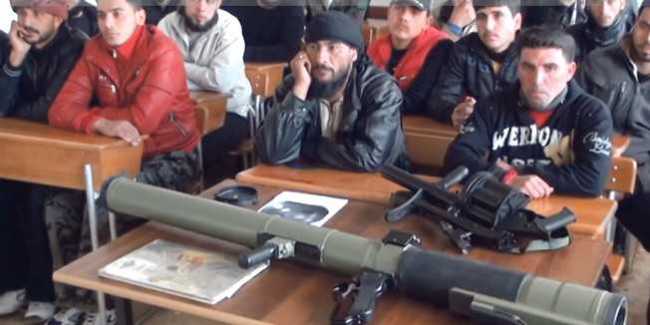Etiquetas
Croatian weapons in Syrian civil war
Syria Live Coverage: A Snapshot of the Cost of War in Aleppo
James Miller, EA Live, EA Middle East and Turkey, Middle East and Iran
April 3, 2013
More Numbers Analysis. In recent days several Twitter accounts have suggested that the efforts to arm the rebels have greatly increased the amount of deaths in the conflict. This most recent effort to arm the rebels with Croatian weapons started in December and picked up steam in January. Before that, there’s no conclusive evidence that foreign weapons made a significant impact on the course of the conflict. The question is whether these Croatian arms have made things worse.
The numbers, however, don’t support that conclusion. For now, we’ll just use the VDC’s numbers.
In July 2012 there were 4049 non-regime deaths. In August there were 5783 deaths. In September there were 5130 deaths. That’s 14,962 deaths in 3 months. Compare that to this year – in January there were 4112 deaths, in February there were 3871, and in March there were 3750. That’s a total of 11733, a significant drop in deaths. These sets of months are good to compare because they both represent times when the military conflict was at its height, and they are separated enough to ensure that none of the Croatian arms influenced the earlier months. For reference, however, 4731 were killed in October, 4173 in November, and 4556 in December, a total of 13460.
In fact, this number may provide a clue as to what is happening and why the number is dropping. Last summer, the fighting was heaviest in Aleppo and Idlib, then Damascus and Deir Ez Zor. As the rebels secured territory in rural areas of all four places, the death tolls there dropped because the front lines shifted. As the fighting continued in the cities, more and more refugees fled the fighting. A combination of fewer contested areas and more and more refugees means that the areas that are being fought over the heaviest are less populated.
This doesn’t mean things are getting any better, though. The refugees, both the internally displaced and those who have fled the country, face a serious humanitarian crisis. Furthermore, the populations of places like Damascus, still densely inhabited, are essentially just waiting for the fighting to enter their neighborhoods.
Also, just because there are fewer deaths doesn’t mean there is less violence. These figures above don’t count the number of bullets fired of explosions, and they don’t count the deaths of combatants. There are other flaws with this data, and even this available data needs a much more in-depth analysis, but this does indicate that the number of deaths can’t be tied to the rebels being better equipped.
However, the amount of refugees fleeing the country is perhaps even more complex. Those numbers do seem to be climbing exponentially. Correspondence does not imply causality, but there is a correspondence, and those refugees are clearly fleeing the worst of the violence. Would the violence be any worse, or the refugee crisis greater, if the Syrian rebels were not better armed? Is a rebel victory the best way to solve both the violence and the humanitarian crisis? These may be questions that data analysis can’t yield an answer to.
Read more in: Brown Moses Blog
